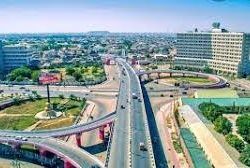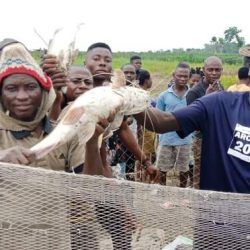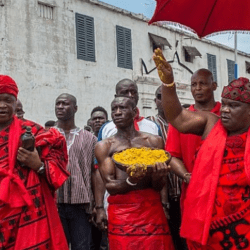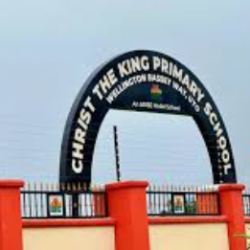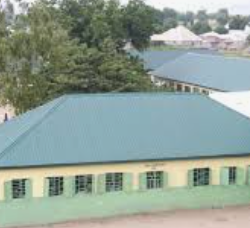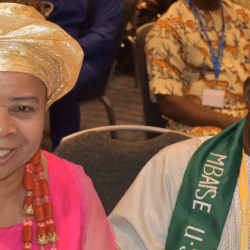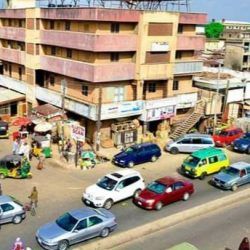British Colonial administration in what is today known as Mbaise started in 1901 by Captain H.M. Douglas, the District Commissioner for Owerri.
The imposition of this colonial rule marked the end of Mbaise Native Administrative system following the introduction of warrant Chiefs and native courts which carried out the functions of the Amala people.
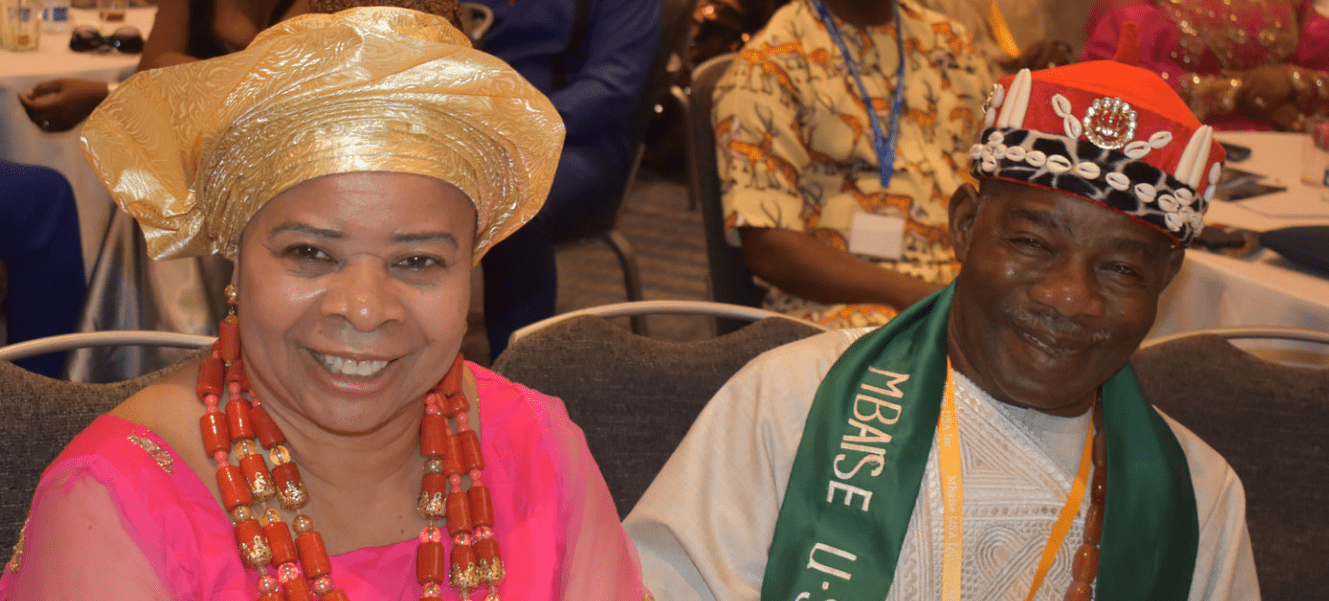
In the absence of a hierarchical traditional leadership institution of the type found in Northern Nigeria, the British Colonial administrators found it difficult to govern the people.
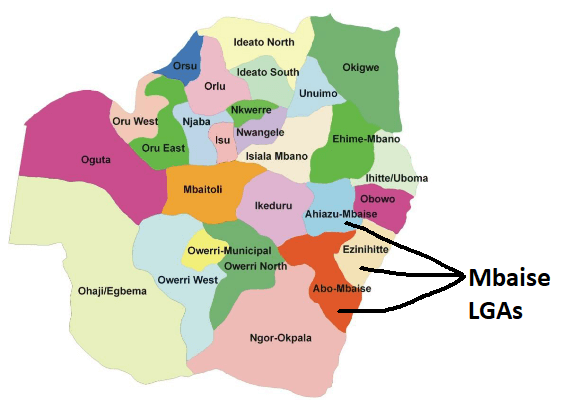
To contend with this problem, it resorted to the introduction of indirect rule system of government by the introduction of native courts and the creation of the office of Warrant Chiefs to serve and operate the newly created native courts (administrative authorities). In 1902 H.M Douglas laid a column of the infamous Aro field force through Owerri into Mbaise and took domain of the land. Mbaise was then under Owerri division and was administered from Owerri. In 1903, the British Colonial Administration set up a court at Owerri for dispensation of justice and settlement of disputes in the area (including Mbaise). In 1904 the British administration began to administer Owerri and Mbaise areas, and consolidated a system of government in Ezinihitte and Ahiara areas. In 1905, Dr. Stewart Rogers, a medical doctor who usually accompanied Mr. Douglas patrol team lost his way in Onicha Ezinihitte and was quickly seized and killed by the natives who were not comfortable with the presence of the white strangers in the land.
In 1906 there was a punitive expedition and massacre of the people by British army led by Captain Brian Douglas and Captain Harold Hastings as punishment for the death of Dr. Stewart. In 1909, the Colonial Administrators established courts at Nkwogwu (Nguru) and Okpala respectively due to long distance of Owerri court from Mbaise.
The first to be appointed warrant Chief in Mbaise for the court at Nkwogwu was Onwuegbulem Ekechukwu of Umuanuma Nguru because he proved friendly and associated very early with the administrators on their arrival at Owerri.
The Colonial masters found favour with him because of his fair complexion which resembled the white. He was also humble and meek. He was nick named white lamb. Later on, Onwuegbulem took up the name, Nwaturuocha, and became known as Waturuocha of Nguru Mbaise and by so doing lost his identity and lineage.
Waturuocha introduced Onyekwere Njoku of Nnarambia Ahiara, his cousin to the colonial masters and was also made a warrant chief because of his effectiveness during the retaliatory massacre of the people; known as Ogu Douglas the war was to avenge the death of Dr. Stewart in Mbaise.
For the court at Okpala, the warrant chiefs were Nwigwe Akanma Nduka (Ogbo Uvuru), Ihekoronye Nwachukwu (Mbutu), Nwachukwu Ogbuokiri and others.
Some of these warrant Chiefs acted as judges during the period of colonial administration and became very powerful and influential. Some of these native court judges were W. Waturuocha (Nguru), P. Onyekwere (Ahiara East) Anyanwu Odirichukwu (Ekwerazu-east). In 1911, the Christian Missionary Society (CMS) mission came to Mbaise at Ife and Ubonukam Onicha Ezinihitte. It was the first advent of Christianity in Mbaise.
Following the coming of churches was also the schools. In 1915, four years after, the Catholic Mission came to Nguru, through Chief Anyamele who also brought the school at St. Joseph Ogbor Nguru.
In 1916, The Catholic Church arrived Ahiara through Chief Onyekwere together with the school at St. Bridges Ahiara, while St. Patrick’s Church and School Ekwerazu were established at Umuokirika in 1917.
In 1927 the first Mbaise man obtained a standard six certificate. He was Chief Pius Nwoga from primary school at Egbu.
The women riot of 1929 and reorganization of native courts
Following the introduction of first direct tax in Igboland in 1927 and the inclusion of women in 1928, a women riot ensued in 1929. The riot saw the two courts at Nkwogwu (Nguru) and Okpala burnt and completed destroyed by women protesting their inclusion in taxation.
After the 1929 women riot (in Eastern region) the British government undertook a fundamental reform and restructuring of the native court administrative system.
THE CHARDWICK CONFERENCE OF 1941 AND EMERGENCE OF FIVE CLAN COURTS
In 1941 a conference was convened by the District Officer, Mr. L.E Chardwick for Mbaise leaders.
Five sectional clan/native courts were established at Itu for Ezinihitte, Uzuaku-Obohia for Ekwerazu, Orie Ahiara for Ahiara, Uvuru for Oke-Uvuru and at Enyiogugu for Agbaja people.
The five native court areas became clan units of native authority with effect from 1934, and served as a milestone towards carving out Mbaise from Owerri division.
FEDERATION OF FIVE CLAN COURTS AND EMERGENCE OF MBA-ISE
Four years after the reorganization of Owerri division, the colonial administration encouraged the federation of small courts created in 1934.
Following this development, the colonial administrators and the Mbaise Paramount Chiefs who were members of the Owerri Divisional Union deliberated and considered federating the five court areas to form one political unit.
The Chiefs included Dennis Nwachukwu Abii, Japhet Jamike Iwunna, Pius Ogu Nwoga etc.
The name Mba-Ise meaning five court areas was suggested and adopted as the political unit.
In 1941 Mr. L.E. Chardwick, the District Officer approved the name with one administrative headquarter and treasury. Enyiogugu served as the administrative headquarter and treasury between 1941 and 1948. In 1948, the treasury was transferred to Aboh in Oboama na Umunama.
This arrangement created two sets of warrant Chiefs, those accountable to the District Officer (Nwa D.O), and those accountable to the District Commissioner (Nwa D.C).
This resulted in court sessions being held in two shifts. One shift attended court sessions for three months before another shift would takeover. This system was found to be cumbersome and called for change.
Judiciary Reform of 1952: The Local County Council In 1952
Another judiciary reform was made, called native appellant jurisdiction.
This initiation by the District Officer recommended the attendance at the court of at least one clan head from each of the five clan court areas to deliberate on ways and means of improving the native court jurisdiction.
The result was the replacement of the native court jurisdiction administration with Local County Council System.
Local County Councils were thus established at Ahiara, Ekwerazu, Enyiogugu, Okwuato, Nguru, Ezinihitte East, Ezinihitte West, Ezinihitte center and Oke. The Mbaise county councils were inaugurated in 1955, while N.D Uka of Umuokirika was elected by the councilors as the first council Chairman.
He was succeeded in 1958 by Dennis Nwachukwu Abii from Eziudo Ezinihitte who served for two tenures. His second term of office spanned beyond 1960 when colonial rule ended in Nigeria. He was succeeded by Donatus Onu from Umuokirika who served between 1964 to 1969.
Mbaise remained as one county council until the end or the Nigeria civil war in 1970 when Local Government Council Administration was adopted throughout Nigeria.
Post War Local Government Council Administration (1970-1976)
Following the post war military rule of 1970 to 1976, Mbaise was split into two local government areas of Aboh Mbaise and Ahiazu-Mbaise.
In 1976, Chief Donatus Onu became the first chairman of Ahaizu Local Government Area (LGA) from 1976 to 1979, while Barr. B.S.C Nzenwa was the first chairman of Aboh Mbaise LGA from 1976 to 1979. In 1989, Ezinihitte LGA was carved out of Aboh Mbaise LGA with headquarters at Itu, while Dr. Timothy Eze was appointed the first chairman and later replaced by Mr. Ugboaja.
These three Local Government Areas of Aboh, Ahaizu and Ezinihitte have remained the only Local Government Areas in Mbaise since 1989.
Local Government Development Areas of 2005
In August 2005, four Local Government Development Areas (LGDA) were created in Mbaise.
They included Enyiato, carved out from Aboh Mbaise LGA, with headquarters at Enyiogugu and Mr. Alan B. Onyemaechi as the coordinator and Oke-Uvuru LGDA also from Aboh Mbaise LGA with headquarter located at Orie Uvuru and Silas Nwamadi as coordinator. Ekwuerazu LGDA was created out of Ahiazu-Mbaise LGA with headquarter at Eziama Oparanadim and Goddy Okoronkwo as coordinator.
Ezinihitte East Local Government Development Area was created out of Ezinihitte LGA and has it’s headquarters at Umueleagwa Onicha with J.I.C. Osundu as coordinator.
Reference
https://mbaisetopseed.org/history-of-mbaise/

